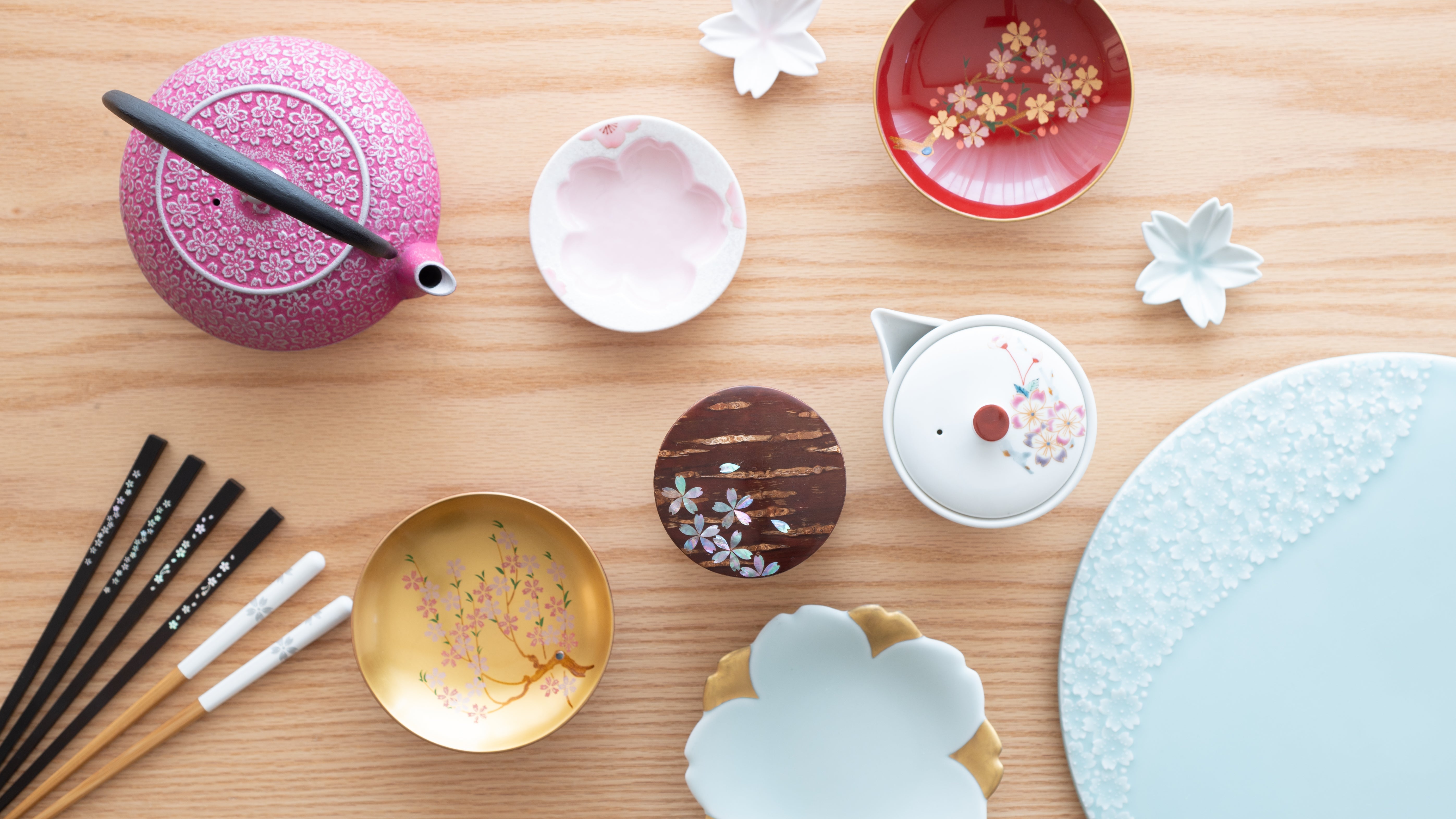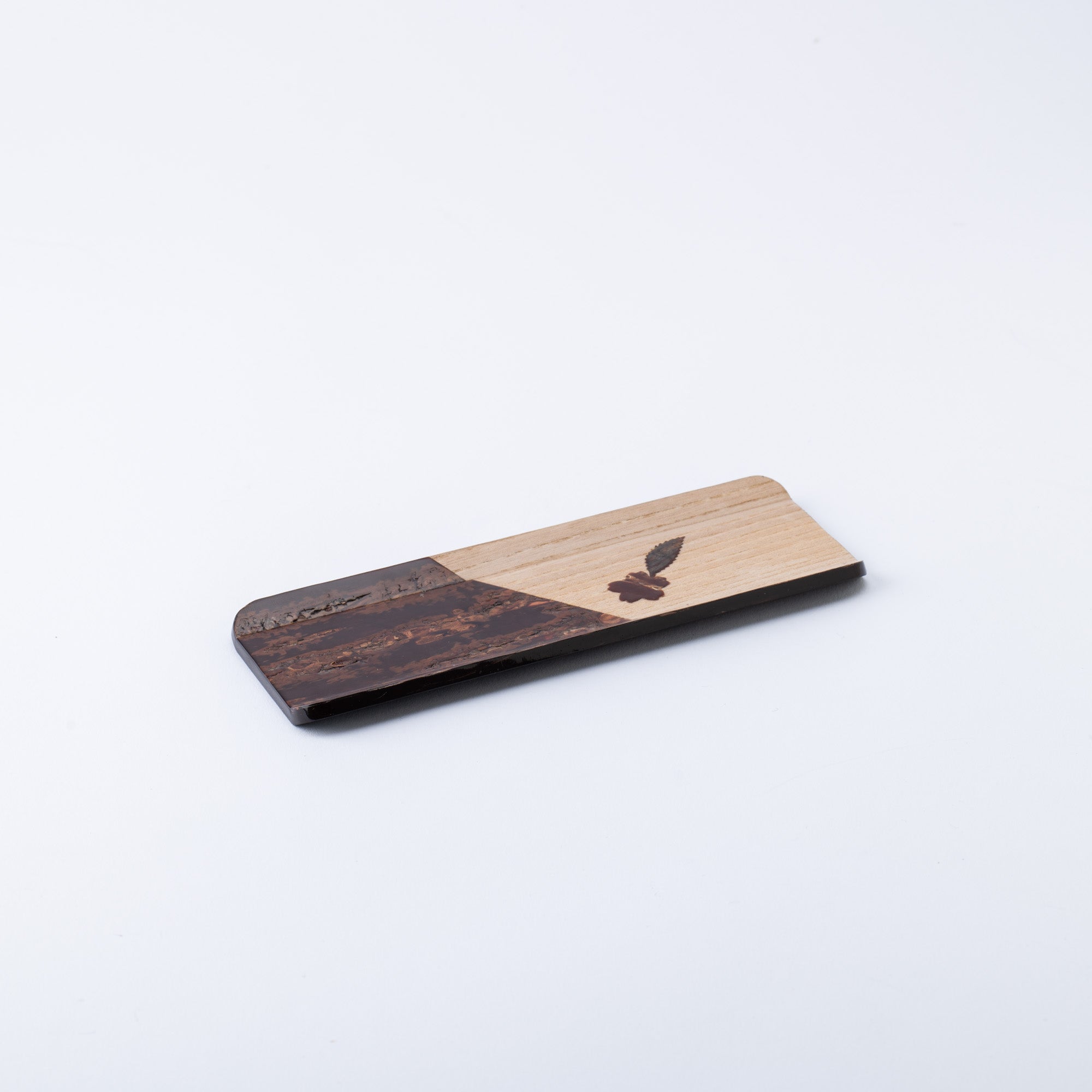
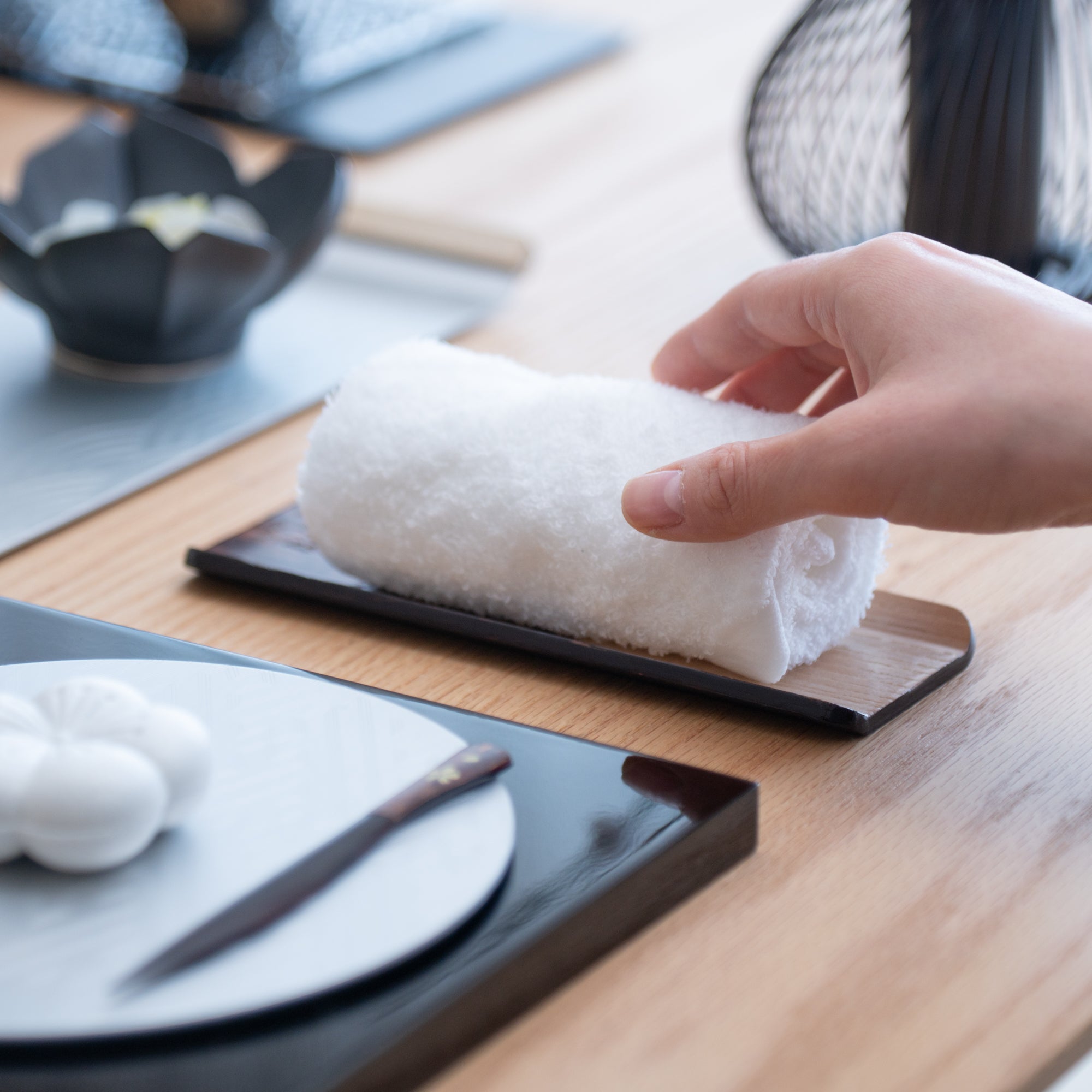
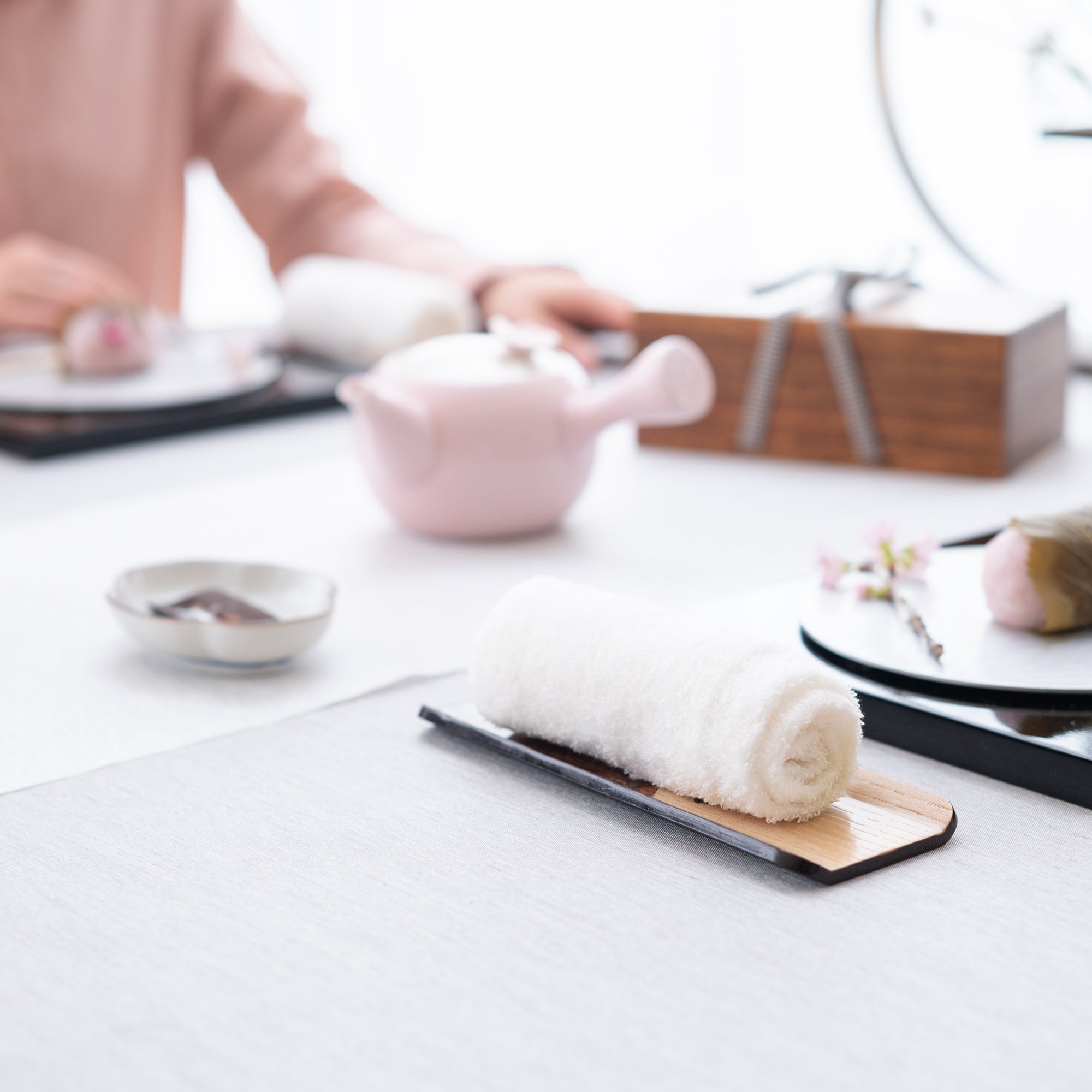
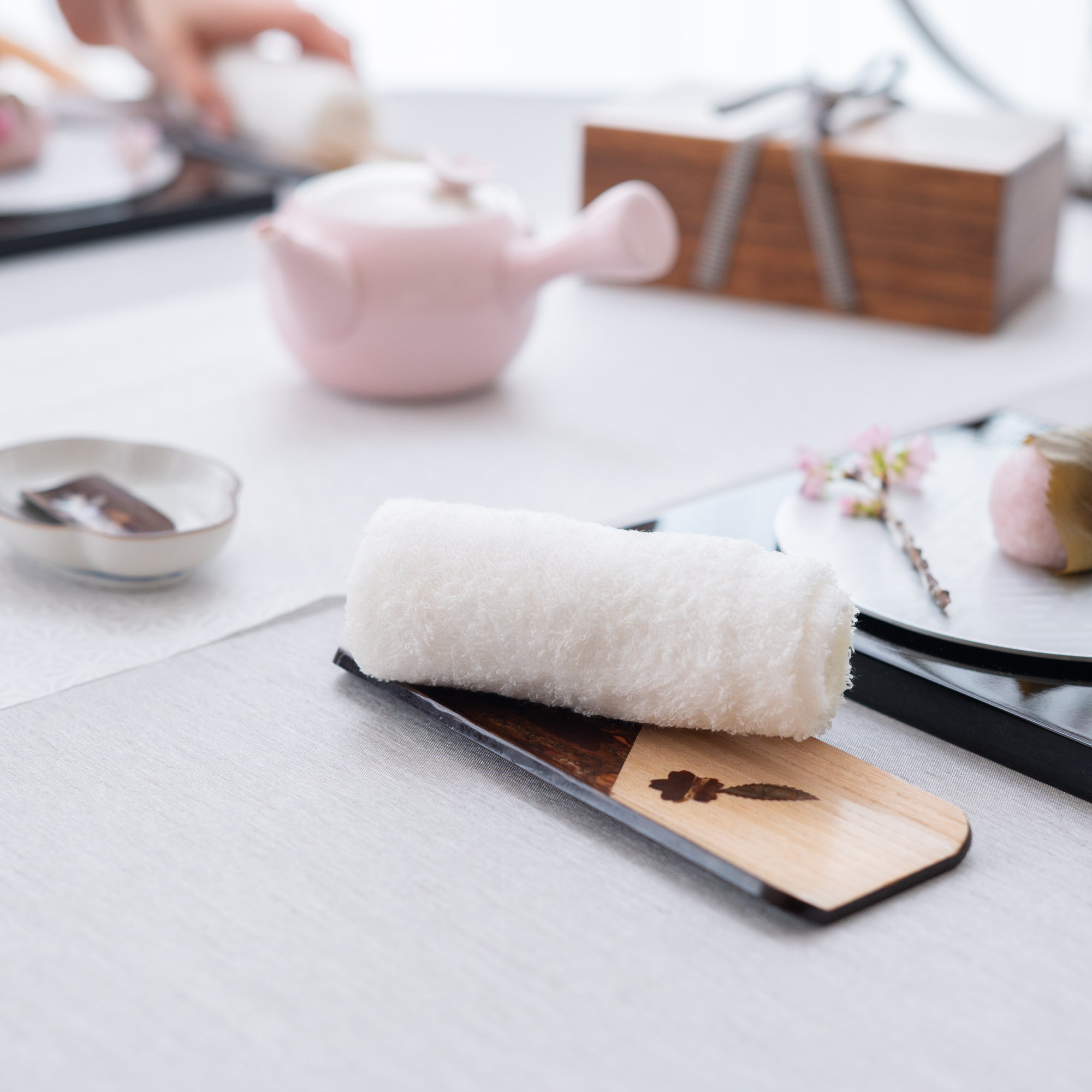
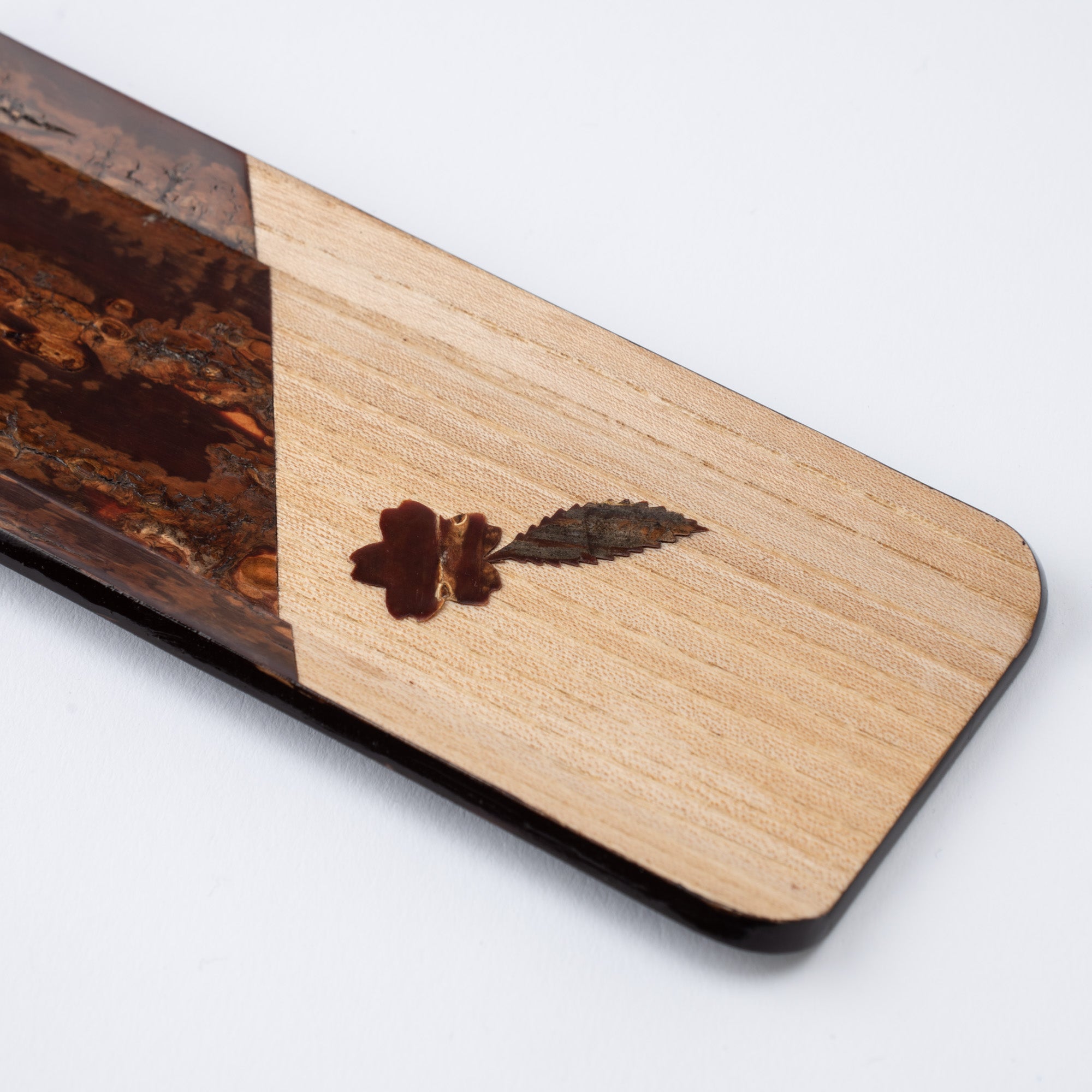

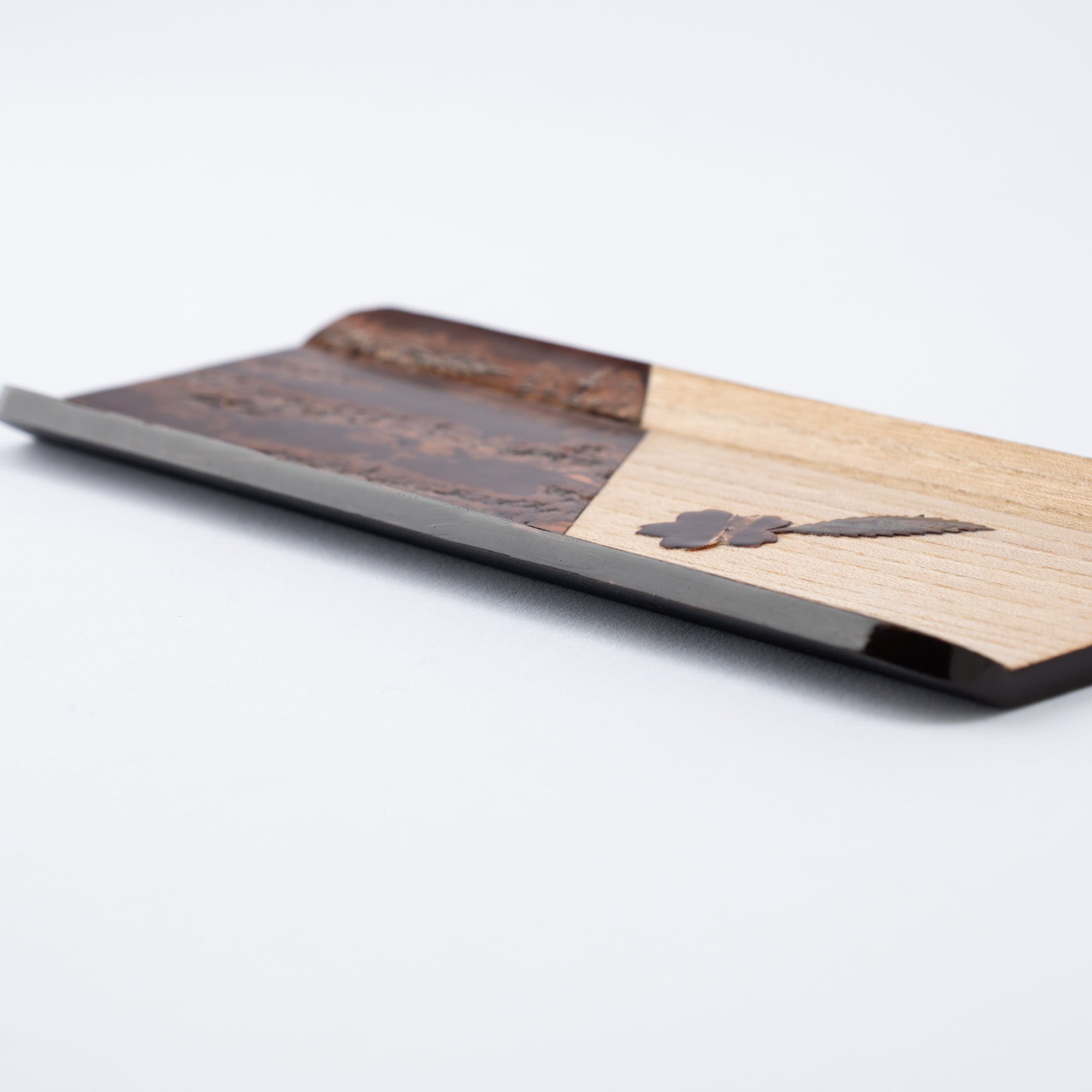
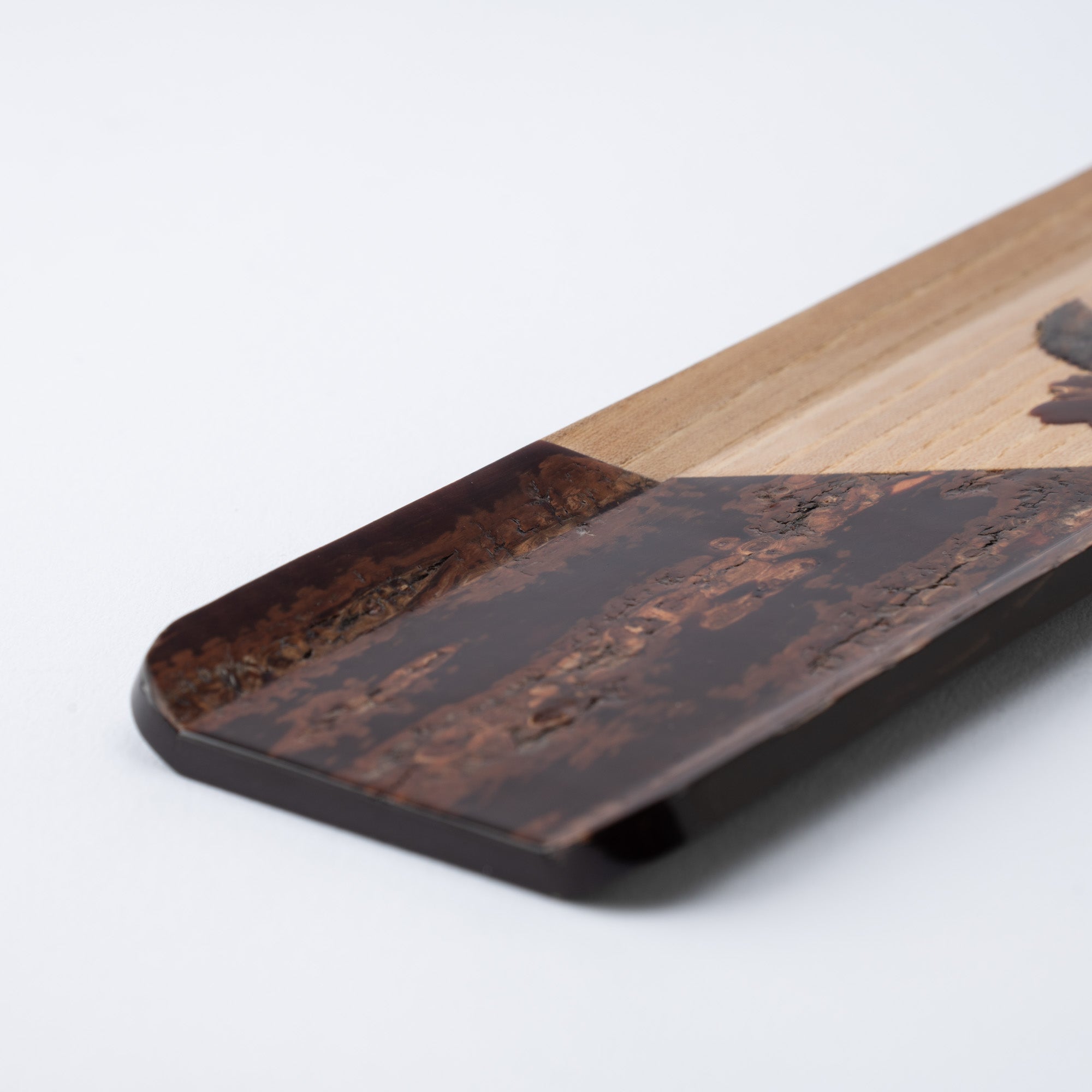
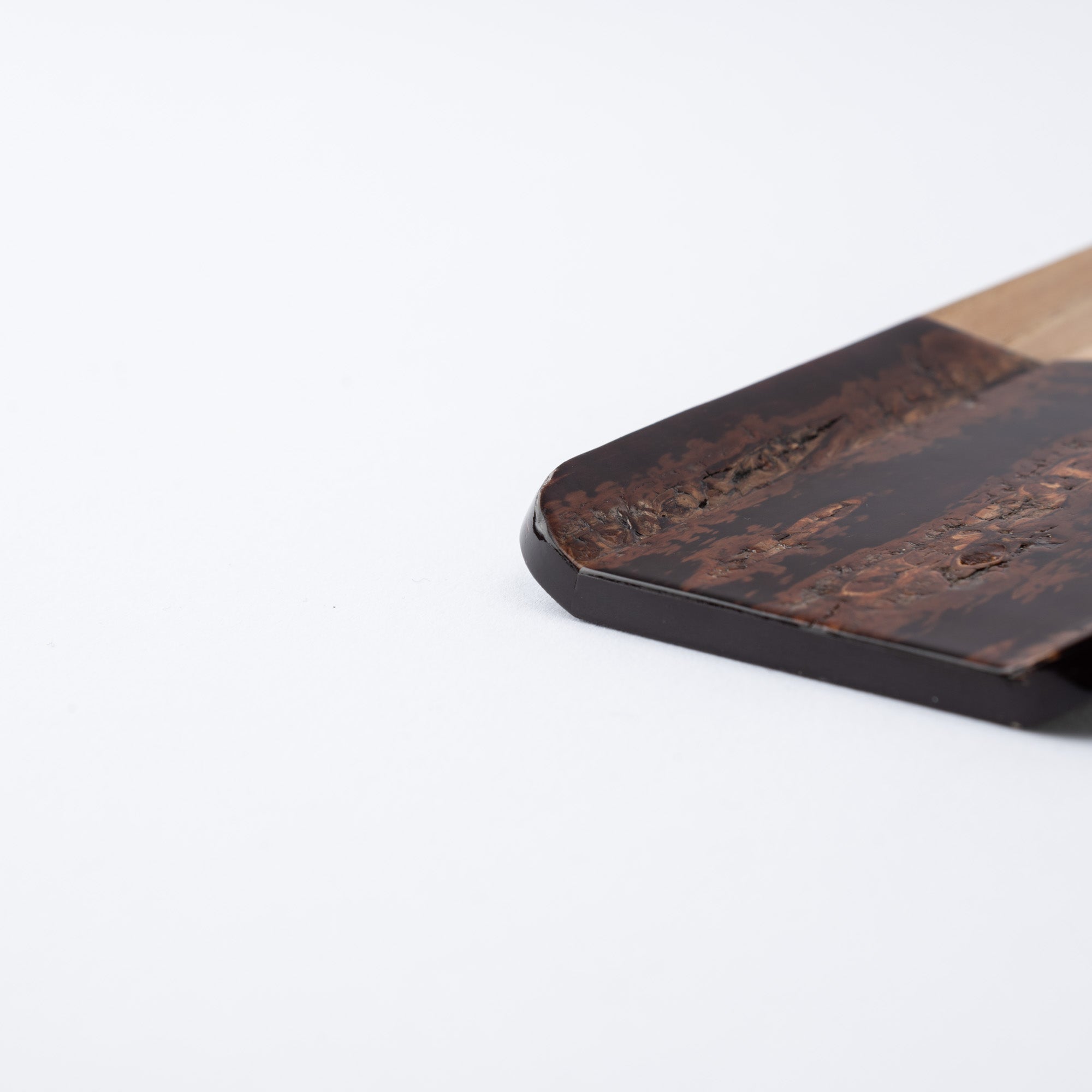
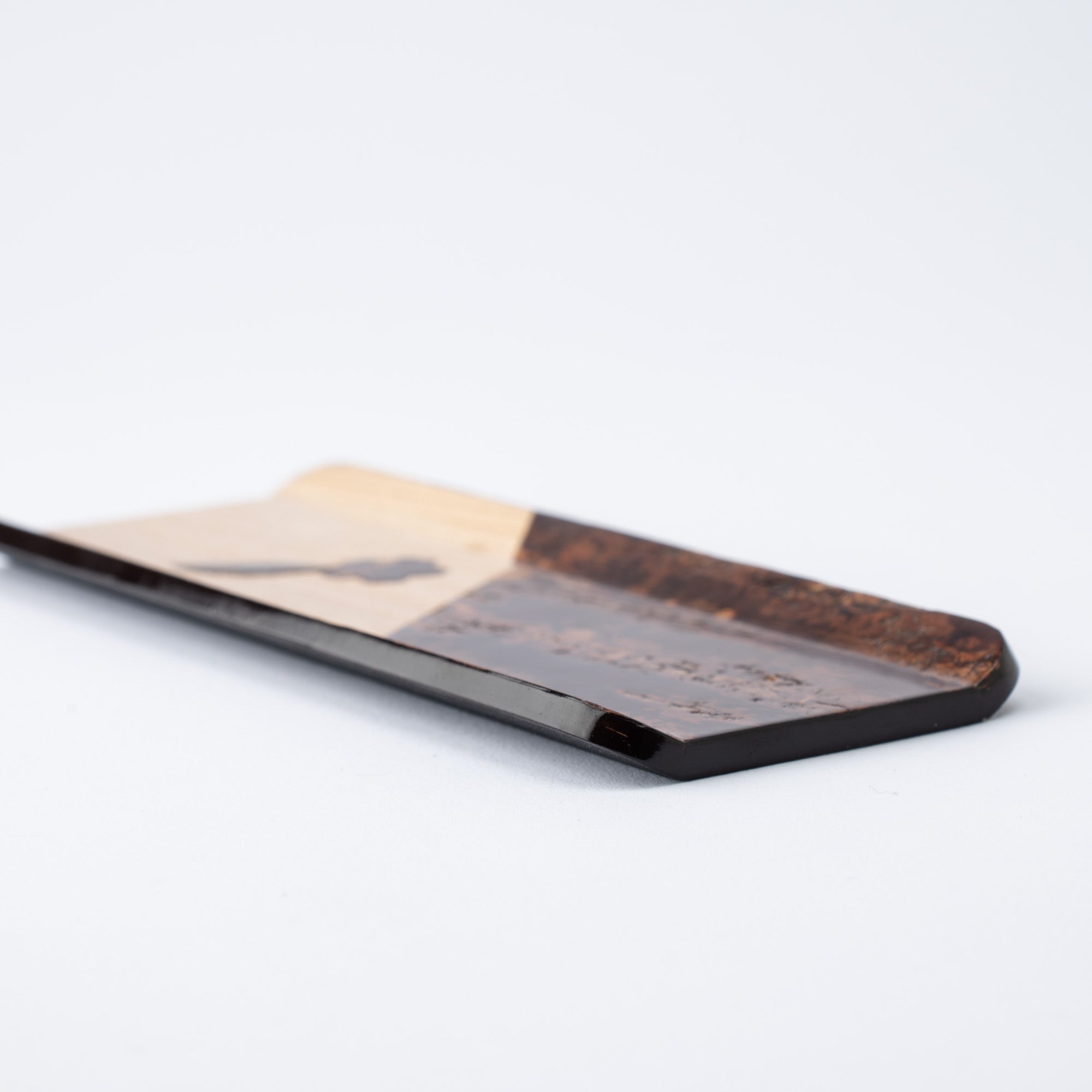
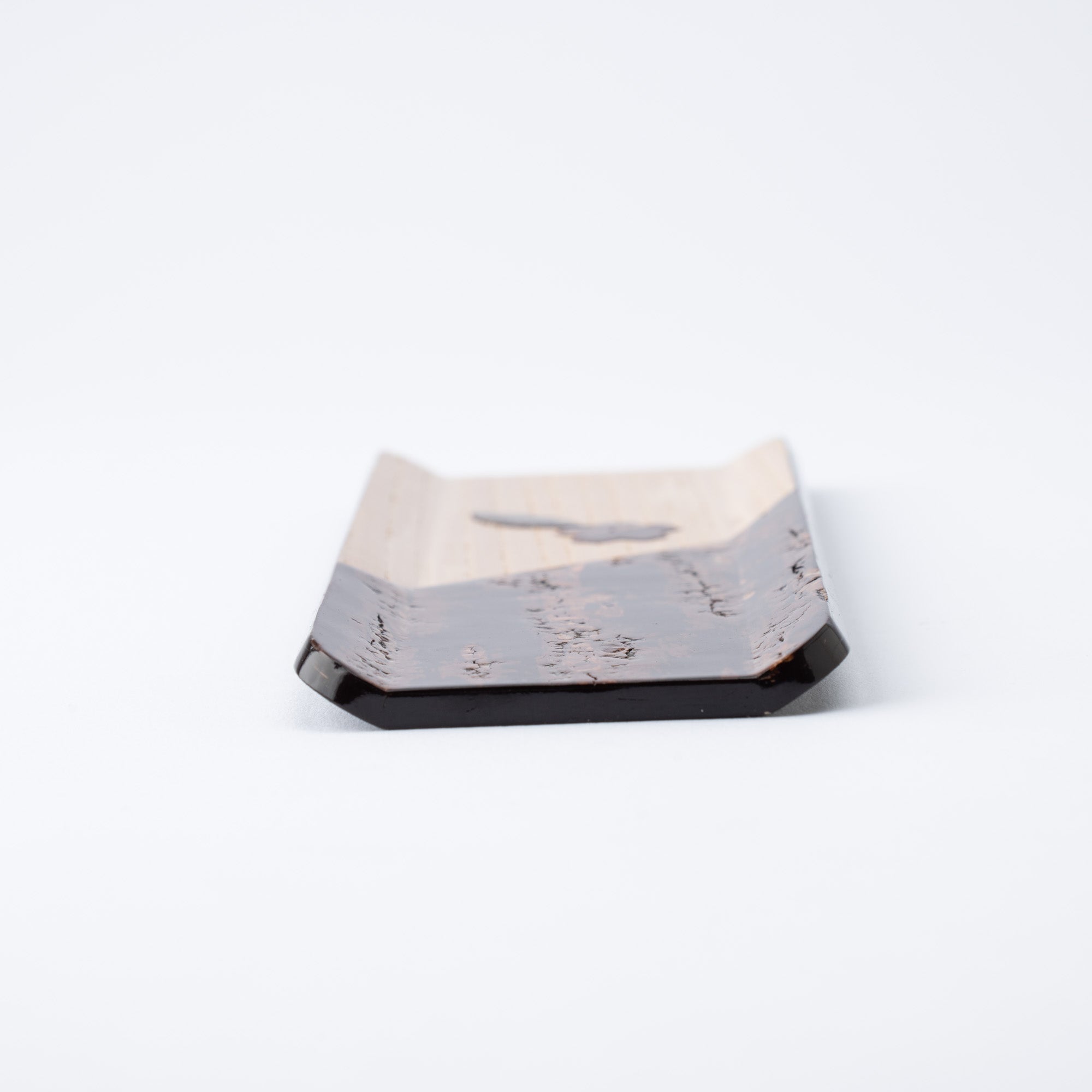
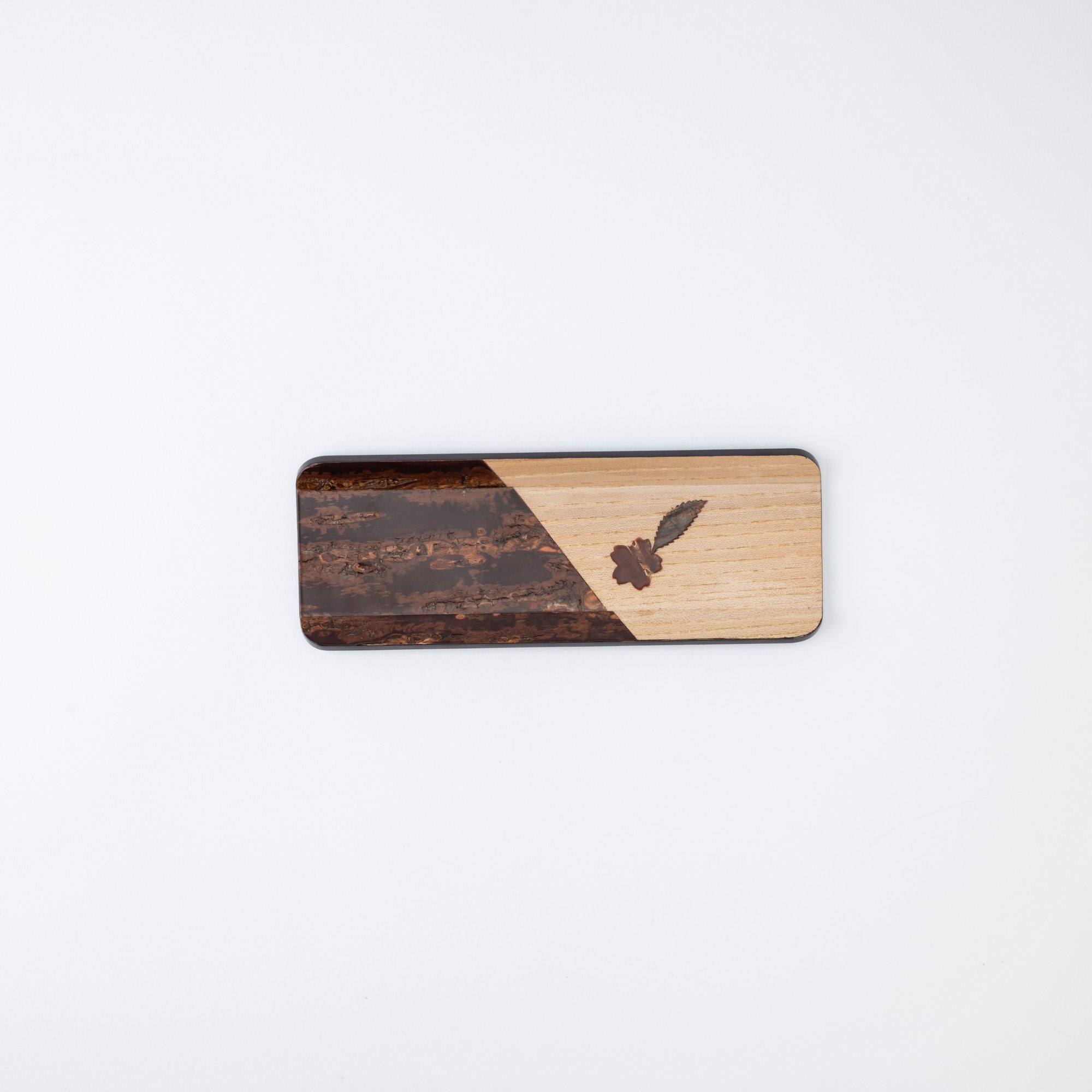
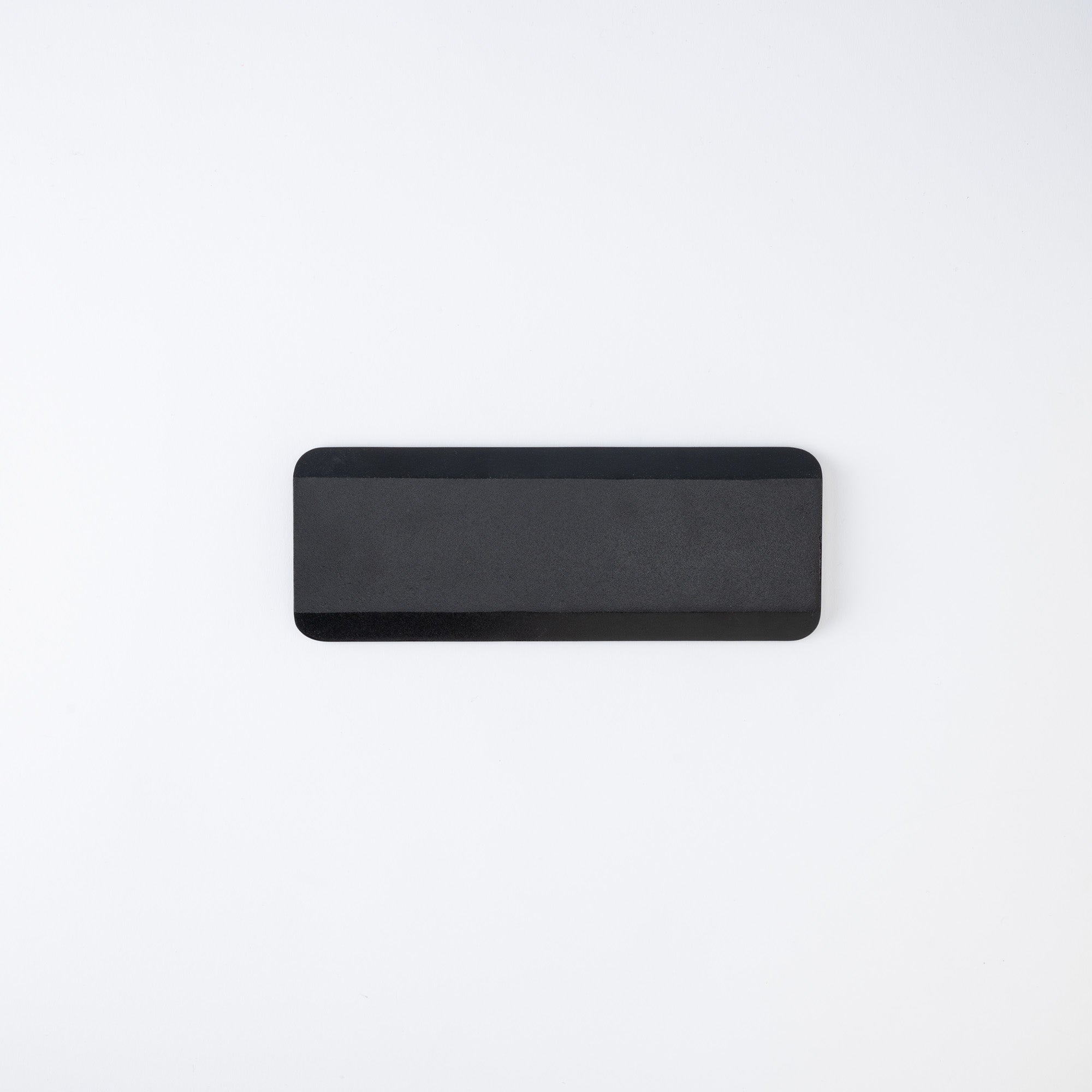
Sakura Oshibori Nasshandtuchablage
Estimated Shipping Widget will be displayed here!
Dieses von Yatsuyanagi geschaffene Oshibori-Feuchttuchtablett besteht aus Kirschrindenarbeit aus der Präfektur Akita und ist mit einem Kirschblütenmotiv aus Holzrinde verziert.
Ein Oshibori ist ein feuchtes Handtuch zum Abwischen der Hände. In Japan wird es manchmal in Restaurants oder bei Einladungen zu Hause bereitgestellt. Es ist weicher als eine Papierserviette und erleichtert die Reinigung der Hände. Es ist praktisch, hygienisch und umweltfreundlich, da es kein Einweghandtuch ist.
Neben Oshibori ist es auch in Mode, Schlüssel, Stifte und andere kleine Gegenstände darauf abzulegen. Obwohl klein, zeugt dieser Gegenstand von den traditionellen Fähigkeiten des Handwerkers.
Die Kombination aus der glänzenden braunen Kirschrinde und dem natürlichen Holz mit der Maserung des Holzes verleiht ihm eine schicke und elegante Atmosphäre. TDie Rückseite ist mit einer rauen Beschichtung versehen, um ein Verrutschen zu verhindern.
Die Kirschrinde wird vorsichtig vom Stamm abgezogen und ein bis zwei Jahre im Schatten getrocknet, um die Feuchtigkeit zu entfernen. Yatsuyanagi engagiert sich für den Erhalt nachhaltiger Natur und die Koexistenz und das gemeinsame Gedeihen von Natur und traditionellem Handwerk. Sie engagieren sich auch aktiv für die Anpflanzung wilder Kirschbäume auf Brachland.
EINZELHEITEN
| Quantity | 1 |
| Size | L 18 cm (7.1 in) x W 6.8 cm (2.7 in) x H 1 cm (0.4 in) |
| Material | Wood |
| Microwave | No |
| Dishwasher | No |
Hersteller / Marke
Yatsuyanagi wurde 1876 gegründet und bewahrt weiterhin die seltene Kunst des traditionellen Kirschrindenhandwerks, bekannt als kabazaiku. Die in der malerischen japanischen Region Kakunodate in der Stadt Senboku in der Präfektur Akita ansässigen Meisterhandwerker verbinden jahrhundertealte Techniken mit modernem Design und fertigen jedes Stück sorgfältig von Hand, um Produkte zu schaffen, die sowohl funktional als auch schön sind.
Erleben Sie mit dieser Kollektion feiner Kunsthandwerke aus Kirschrinde die perfekte Harmonie japanischer Tradition und zeitgenössischer Eleganz in Ihrem Alltag.
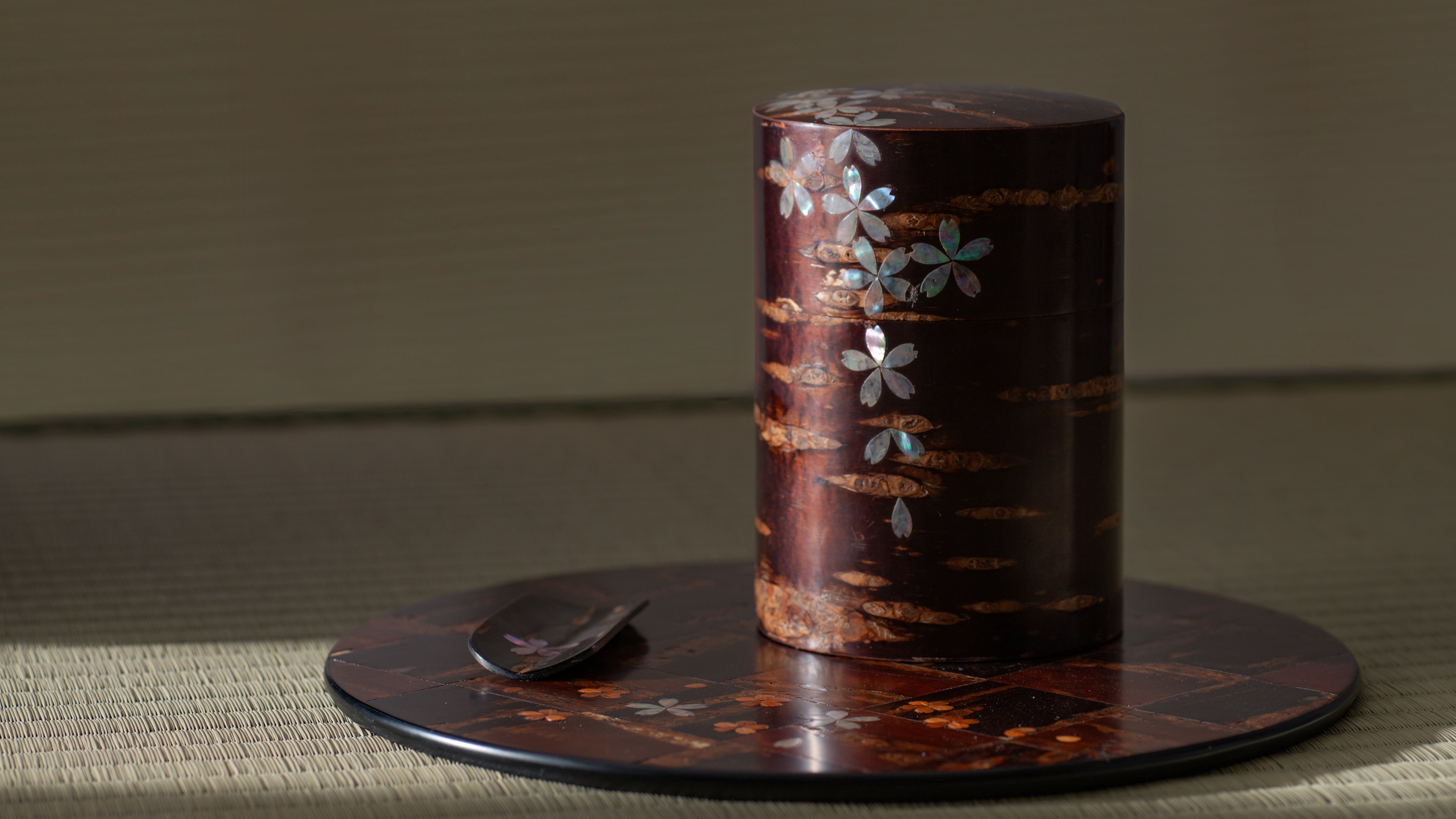
Kunsthandwerk
Kabazaiku ist ein Kunsthandwerk, das in der Präfektur Akita im Norden Japans aus der Rinde von Yamazakura, oder „Japanische Bergkirsche“. Der faszinierende seiden- oder metallartige Glanz, der der Kirschbaumrinde eigen ist, kombiniert mit ihrer tiefen Farbe, wird zur Herstellung von Stücken von unvergleichlicher Schönheit verwendet. Dieses traditionelle japanische Handwerk hat eine etwa 250-jährige Geschichte.
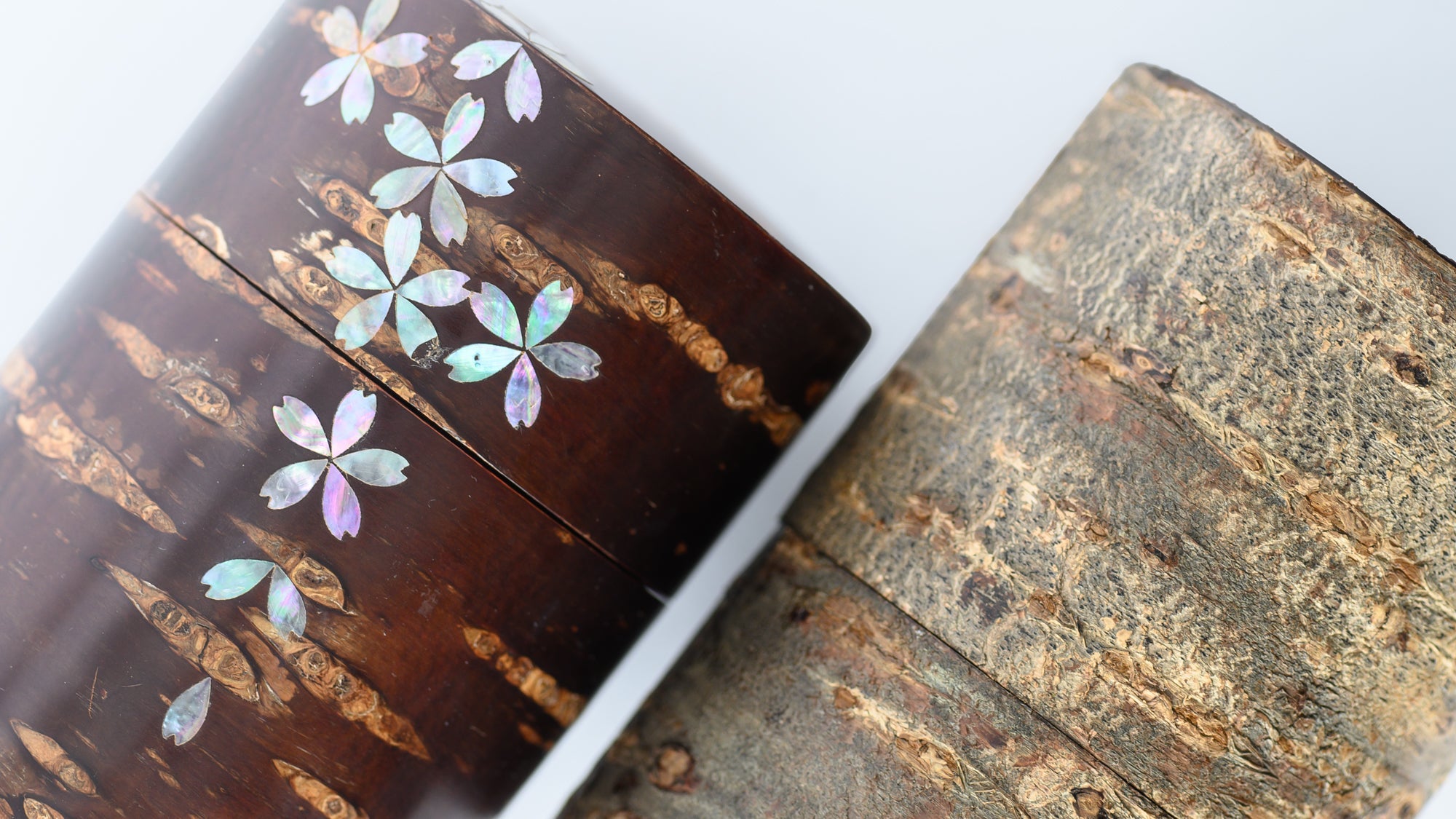
Optionen auswählen













Estimated Shipping Widget will be displayed here!
Oshibori Handtuchablagen
Ein oshibori ist ein kleines, gerolltes, feuchtes Handtuch, das in japanischen Restaurants und Privathaushalten häufig zum Abwischen der Hände vor und während des Essens verwendet wird. Das Handtuch wird im Sommer typischerweise kalt und im Winter warm serviert und verstärkt sofort das Gefühl von Luxus und Gastfreundschaft am Tisch. Neben seiner praktischen Funktion verleiht ein Oshibori-Handtuchtablett mit seiner authentischen Textur und seinem Design auch dekorativen Charme. Bringen Sie Japans berühmtes Omotenashi, Gastfreundschaft, zu Ihnen nach Hause, indem Sie Ihren Gästen ein Oshibori auf einem schön gestalteten Tablett anbieten.
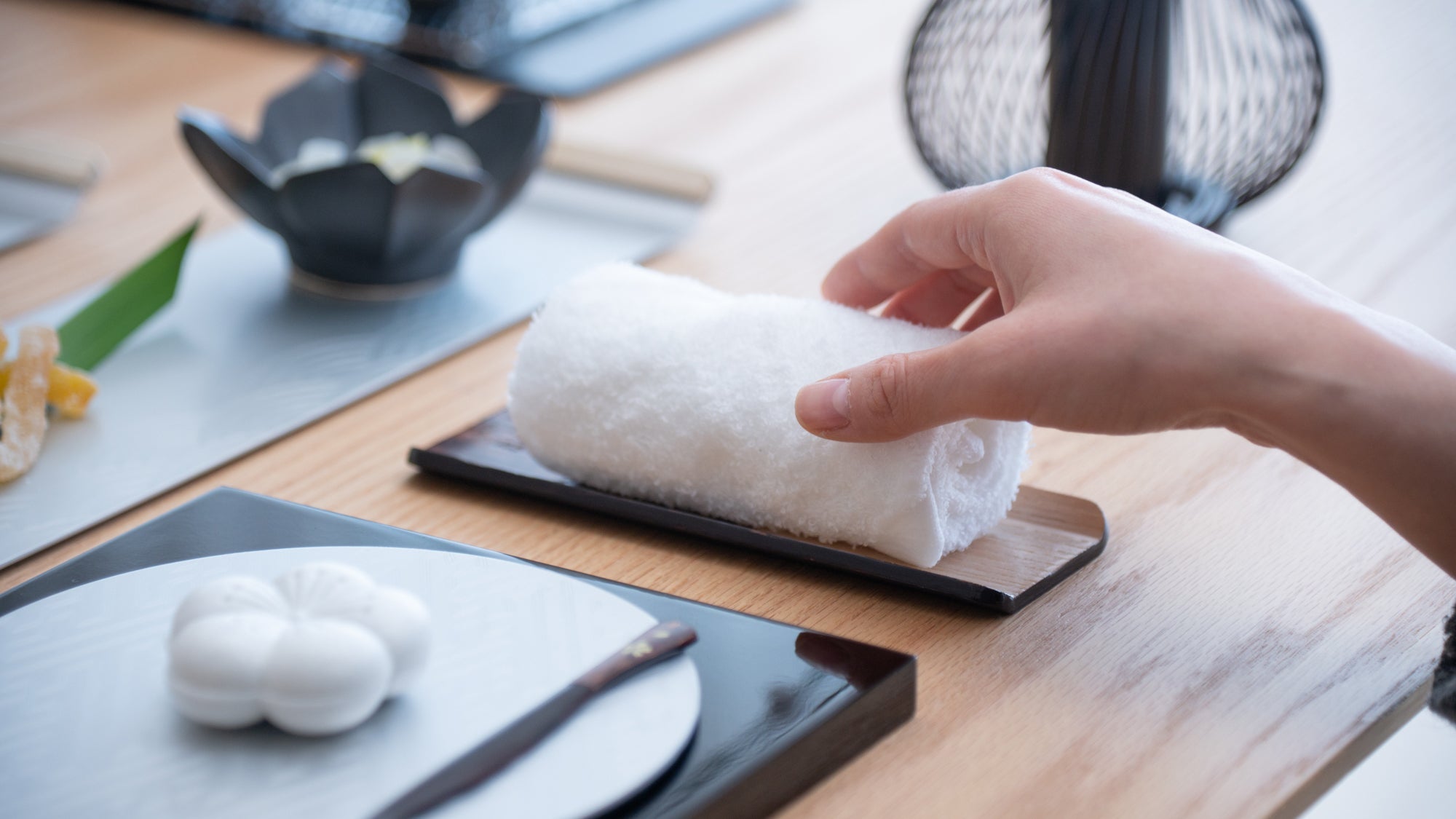
Sakura
Aus unserer Kollektion an japanischem Geschirr und Essgeschirr haben wir Artikel mit Kirschblütenmotiven zusammengestellt, die die Schönheit Japans widerspiegeln. Wir hoffen, dass Sie diese Stücke, die bei Menschen jeden Alters und aus allen Regionen beliebt sind, in Ihrem Zuhause willkommen heißen.
